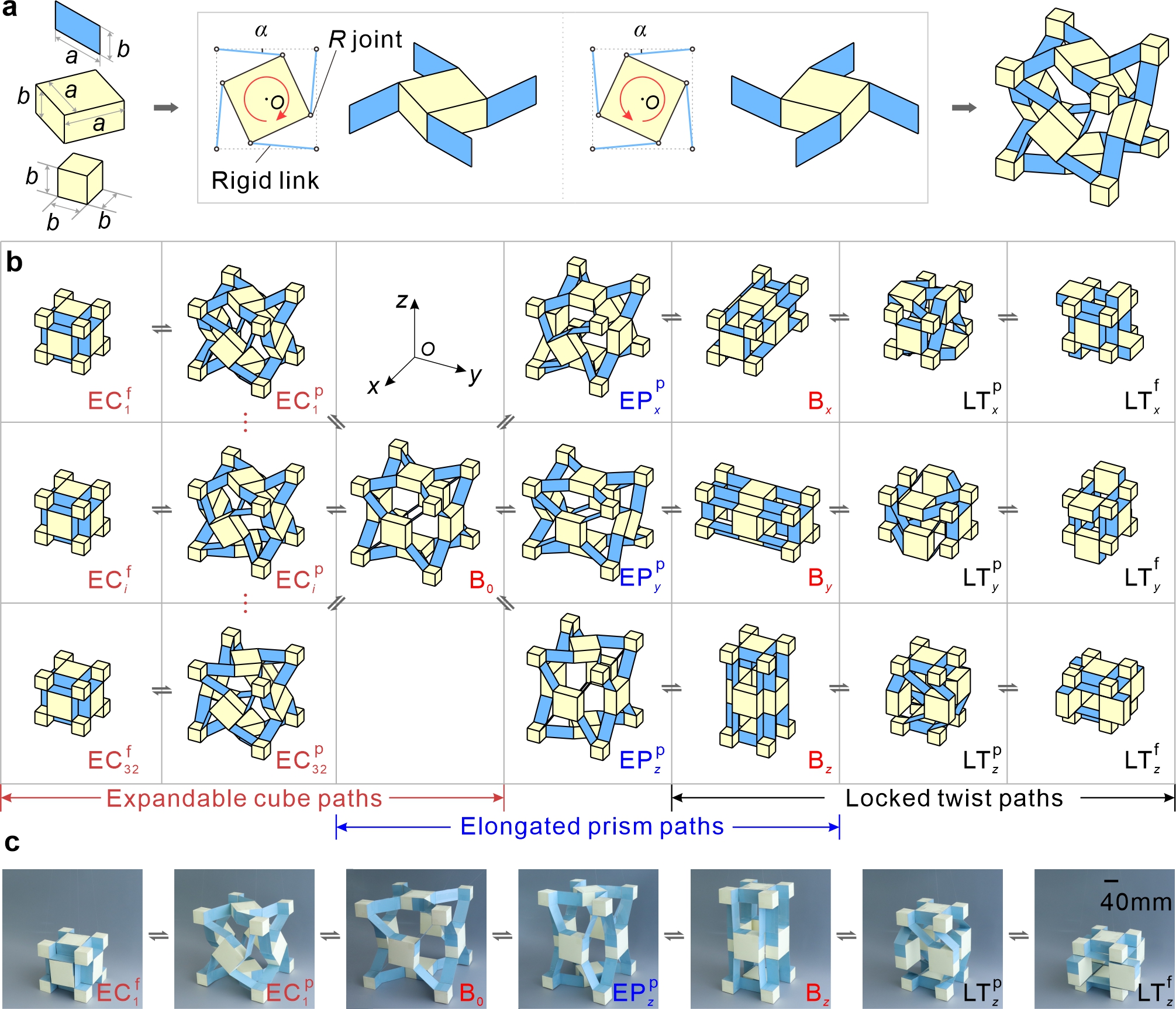|
New Publication: 3D Programmable Metamaterials Based on Reconfigurable Mechanism Modules
From: Date: 2021-12-03 Mechanical metamaterials are classified as artificially designed structures and exhibit intriguing and sometimes counterintuitive properties that cannot be achieved in natural materials. Generally, the unit cells in the metamaterial tessellation are of one type with identical deformation properties, which leads to that the resultant metamaterials’ characteristics are limited to a small range during the flexible deformation. The shape-reconfigurable system through structural deformation has been identified as an effective method to realize programmability and tunability. Of particular interest here are mechanism-based metamaterials with inherently reliable deformation path and which is essential for programmable and tunable properties. However, the current works focus on programmable metamaterials that reconfigure along a single deformation path. Efforts also have been made to investigate enhanced reconfigurable ones with multiple motion paths for programmable metamaterials, yet it turns out to be typically multiple degree-of-freedoms, resulting in a challenging controllable deformation process.
Video 1 Figure 1. The mechanism basis of the module. Figure 2. Mechanical properties of a single module. Figure 3. The series assembly with (mz+nz) modules, of which mz modules in PPR state and nz modules in NPR state. Figure 4. Metamaterials with the 3D tessellation of mechanism modules.
Liu W, Jiang H, Chen Y, 3D Programmable Metamaterials Based on Reconfigurable Mechanism Modules, Advanced Functional Materials, 2021, 2109865. |



